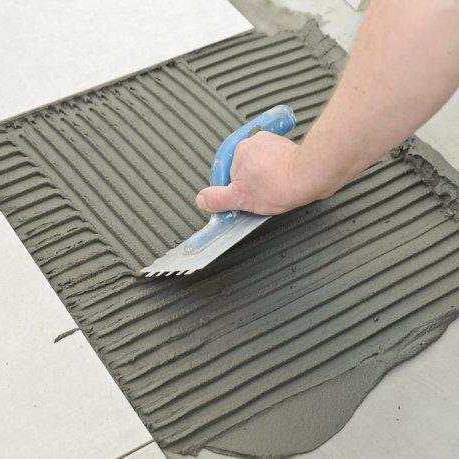
Oct . 21, 2025 12:30 Back to list
Mortar Bonding Agent: Strong Grip, Waterproof, Easy Mix
EIFS Bonding Mortar Additive: field notes, lab numbers, and what crews really care about
If you’ve ever fought a stubborn substrate, you already know why a good Mortar Bonding Agent can make or break the day. This one comes out of NO.1 Building, Technology Center, High-Tech Zone, Shijiazhuang City, Hebei, China—an industrial pocket that’s been quietly feeding the global EIFS/ETICS supply chain for years. First listed around 2019, it’s still very much current because the jobsite problems haven’t changed: adhesion on mixed substrates, freeze–thaw, and crews that need predictable open time without babying the mix.

What’s trending (and why it matters)
The market is drifting toward polymer-modified systems with lower VOCs, better crack resistance, and compatibility with EPS/XPS facades. In fact, most spec writers now call for EN 1542 or ASTM C1583 pull-off numbers, not just marketing adjectives. To be honest, contractors just want fewer callbacks. A robust Mortar Bonding Agent helps mortars “wet out” dusty or dense surfaces and stay stuck through thermal cycling.
Product snapshot and typical specs
| Product name | EIFS BONDING MORTAR ADDITIVE |
| Type | Mixture for exclusive usage (polymer bonding additive) |
| Appearance | Milky polymer emulsion, ≈45–52% solids (typical for this class; real‑world use may vary) |
| Recommended dosage | ≈5–12% of cement weight in mortar; or dilute 1:1 with water as a bonding slurry/primer |
| Bond strength | EN 1542 pull-off ≥1.0–1.5 MPa @28d on prepared concrete (internal lab data) |
| Freeze–thaw retention | ≥80% bond retention after 50 cycles (lab, controlled) |
| VOC | Low-VOC, waterborne |
| Service life | Designed to align with ETICS life cycles ≈25 years, given proper system design and maintenance |
| Origin | Shijiazhuang, Hebei, China |
Where it’s used
- EIFS/ETICS basecoat and adhesive layers on EPS/XPS and mineral wool
- Patching and reprofiling of concrete/masonry, especially mixed substrates
- As a primer/slurry for old-to-new mortar interfaces (renovations, overlays)
Process flow (materials, methods, testing)
Materials: Portland cement mortar, clean graded sand, clean water, Mortar Bonding Agent. Substrate must be sound—mechanically prepared to ICRI CSP 3–5, free of laitance. Dampen to SSD.
Method: Option A—make a bonding slurry (1:1 additive:water + cement) and brush on; place mortar while tacky. Option B—dose the additive into mix water (≈5–12% of cement weight). Mix 3–5 minutes, rest, remix. Apply, screed, float. Protect from wind and rapid dry-out.
Testing: Pull-off by EN 1542 or ASTM C1583; compressive/flexural by EN 1015-11; water absorption by EN 1015-18. For EIFS, verify system to ETAG 004/EAD 040083-00-0404. Site QA: at least three pull-offs per elevation—contractors actually do this more often now, surprisingly.
Advantages we observed
Better early grab without killing open time, improved cohesion in thin sections, and nicer trowel feel. Many customers say it reduces “curl” on patches and resists microcracking after a couple of freeze–thaw weeks.
Vendor snapshot (indicative, specs ≈ values)
| Brand | Chemistry | EN 1542 @28d | VOC | Certs | Notes |
|---|---|---|---|---|---|
| EIFS BONDING MORTAR ADDITIVE (CNJZ) | Acrylic copolymer emulsion | ≈1.2–1.5 MPa | Low | ISO 9001, REACH-ready | Tuned for ETICS basecoat/adhesive |
| Sika Latex R | SBR latex | ≈1.0–1.4 MPa | Low | ISO 9001 | General repair and bonding |
| Mapei Planicrete | SBR latex | ≈1.0–1.3 MPa | Low | ISO 9001 | Versatile in overlays |
| LATICRETE 3701 | Polymer admix | ≈1.1–1.4 MPa | Low | ISO 9001 | Tile/mortar systems |
Customization and QC
For OEMs, solids content, defoamer level, rheology modifiers, and anti-freeze packages can be tuned. Batch QA typically includes solids %, viscosity, pH, and a rapid pull-off coupon to EN 1542. I guess the sweet spot is matching set profile to local cement chemistry—overlooked but critical.
Mini case notes
- Coastal hotel reclad: ETICS basecoat over old stucco. Pull-off went from ≈0.6 MPa (control) to ≈1.3 MPa with Mortar Bonding Agent; zero delams after storm season (contractor feedback).
- Cold-climate balcony patches: fewer edge curls, better feathering; crew said “trowel feel was creamy, not sticky,” which—if you know, you know.
Compliance and paperwork
Look for ISO 9001 at the plant, safety data per GHS, and system-level conformity to ETAG 004/EAD 040083 for EIFS. Site testing via EN 1542 or ASTM C1583 keeps everyone honest.
References
- ASTM C1059/C1059M – Latex Agents for Bonding Fresh To Hardened Concrete.
- EN 1542 – Products and systems for protection and repair of concrete structures – Pull-off test.
- ETAG 004 / EAD 040083-00-0404 – External Thermal Insulation Composite Systems (ETICS).
- ISO 9001:2015 – Quality management systems.
-
Cellulose Ether | High Purity, Fast Hydration, Stable Flow
NewsNov.17,2025
-
Cellosize HEC Thickener – High Purity, Fast-Dissolving
NewsNov.17,2025
-
Cellulose Ether: High-Purity Liquid Thickener, HEC Cellulose
NewsNov.17,2025
-
VAE Powder (RDP): High Adhesion & Flexibility for Mortars
NewsNov.17,2025
-
Cellulose Ether: High Purity, Fast-Dissolving, Stable Flow
NewsNov.17,2025
-
Cellosize HEC Thickener – High Purity, Fast-Dissolving
NewsNov.11,2025







